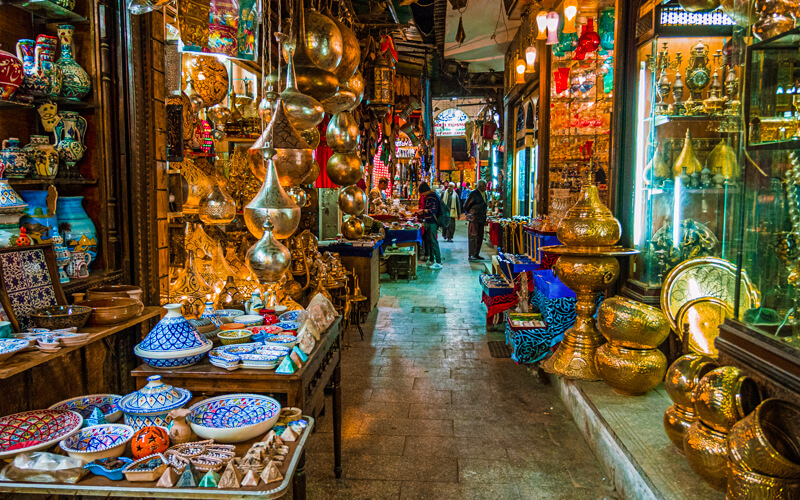
In ancient Arabic, the name Essam Azzam Street meant “Sharia al-Muizz li-Deen Allah,” which makes it one of the oldest streets in Cairo, Egypt. It’s one of the city’s oldest streets, and it’s around a kilometer long. According to UN studies, it has the greatest concentration of architectural marvels from the Middle Ages found anywhere in the Islamic world.
Location:
It’s in Old Islamic Cairo, a half-hour drive from the city’s economical district. This is one of Egypt’s most important historical sites for Islamic history.
History:
From Bab Al-Futuh in the north to Bab Zuweila in the south, the city’s main thoroughfare is Al Muizz. As of April 24, 2008, visitors to the section of Al-Muizz Street now designated as an “open-air museum” are restricted to doing so on foot between 8:00 a.m. and 11:00 p.m.
Approximately 200 meters west of Midan El-Hussein, Al Muizz Street crosses the Muski and connects with two mosques. People often refer to this section of the street as the Coppersmiths Bazaar. Crescent-topped posts, basins, and finials are a common sight there. Hence the area got its moniker from those stores.
Businesses selling these goods soon replace the jewelry stores that are too busy due to the Goldsmiths Bazaar to the north. The Fatimids transformed this thoroughfare into a grand parade field between their two caliphal residences and turned it into a bustling marketplace. Bayn al Qasrayn translates as “Between the Two Palaces” in English.
It is still called by that name today, even after all palaces were demolished. The first novel in Naguib Mahfouz’s Cairo Trilogy also shares the street’s name, and the book’s title is sometimes rendered as “Palace stroll.”




